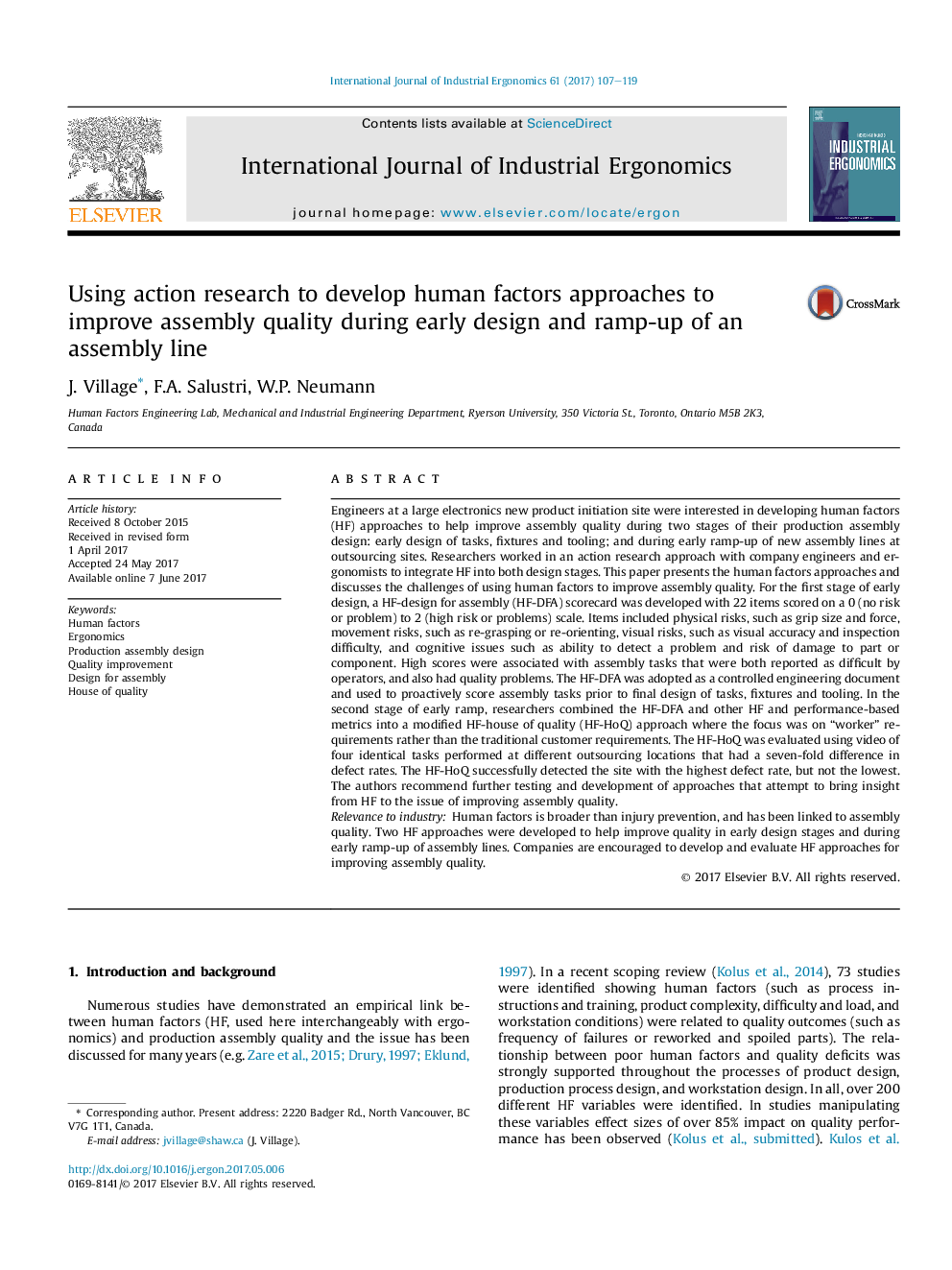| کد مقاله | کد نشریه | سال انتشار | مقاله انگلیسی | نسخه تمام متن |
|---|---|---|---|---|
| 5123667 | 1487414 | 2017 | 13 صفحه PDF | دانلود رایگان |
- A human factors (HF) design-for-assembly scorecard was developed to detect potential HF issues affecting assembly quality prior to design of tasks, fixtures and tooling.
- A modified HF house-of-quality approach was developed that successfully detected the outsource site, among four, with the highest defect rate.
- HF can help improve assembly quality in early design stages, but more work is needed to test and validate tools and approaches.
Engineers at a large electronics new product initiation site were interested in developing human factors (HF) approaches to help improve assembly quality during two stages of their production assembly design: early design of tasks, fixtures and tooling; and during early ramp-up of new assembly lines at outsourcing sites. Researchers worked in an action research approach with company engineers and ergonomists to integrate HF into both design stages. This paper presents the human factors approaches and discusses the challenges of using human factors to improve assembly quality. For the first stage of early design, a HF-design for assembly (HF-DFA) scorecard was developed with 22 items scored on a 0 (no risk or problem) to 2 (high risk or problems) scale. Items included physical risks, such as grip size and force, movement risks, such as re-grasping or re-orienting, visual risks, such as visual accuracy and inspection difficulty, and cognitive issues such as ability to detect a problem and risk of damage to part or component. High scores were associated with assembly tasks that were both reported as difficult by operators, and also had quality problems. The HF-DFA was adopted as a controlled engineering document and used to proactively score assembly tasks prior to final design of tasks, fixtures and tooling. In the second stage of early ramp, researchers combined the HF-DFA and other HF and performance-based metrics into a modified HF-house of quality (HF-HoQ) approach where the focus was on “worker” requirements rather than the traditional customer requirements. The HF-HoQ was evaluated using video of four identical tasks performed at different outsourcing locations that had a seven-fold difference in defect rates. The HF-HoQ successfully detected the site with the highest defect rate, but not the lowest. The authors recommend further testing and development of approaches that attempt to bring insight from HF to the issue of improving assembly quality.Relevance to industryHuman factors is broader than injury prevention, and has been linked to assembly quality. Two HF approaches were developed to help improve quality in early design stages and during early ramp-up of assembly lines. Companies are encouraged to develop and evaluate HF approaches for improving assembly quality.
Journal: International Journal of Industrial Ergonomics - Volume 61, September 2017, Pages 107-119
